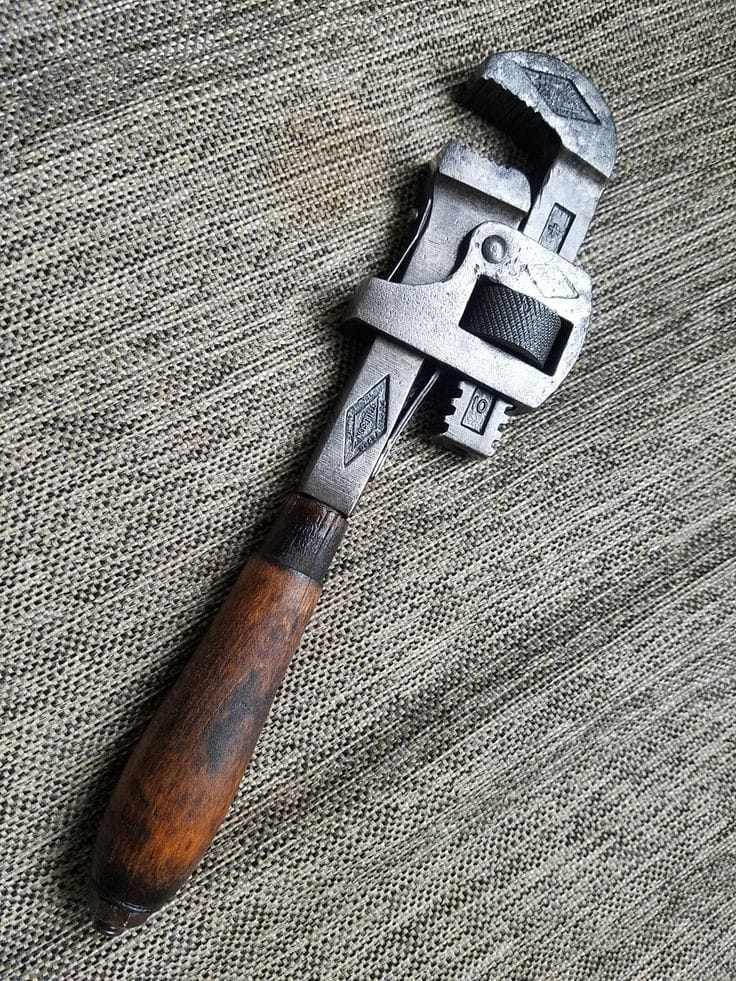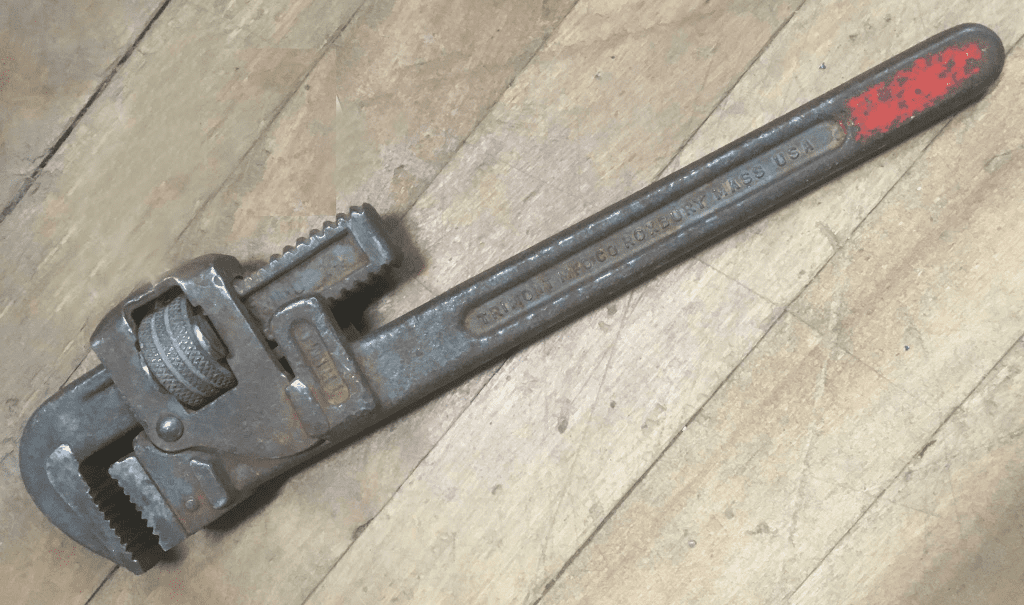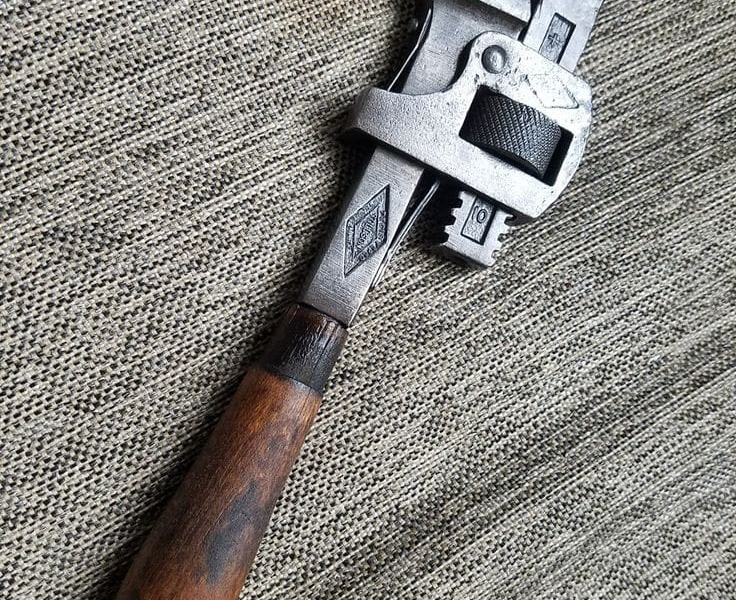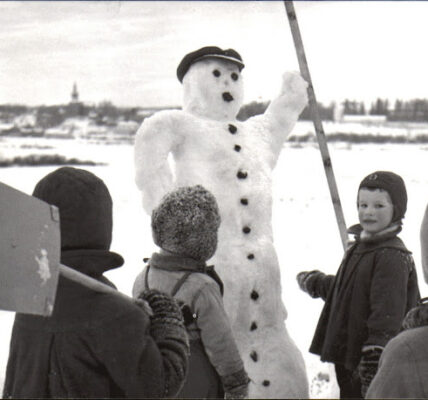In the world of mechanical and plumbing trades, certain tools stand out as indispensable. Among these is the iconic pipe wrench, a specialized adjustable wrench designed exclusively for circular objects like pipes and tubes. You may know how to use it, but have you ever wondered about the history behind this essential tool? From its invention by Daniel C. Stillson over 150 years ago to its various modern forms, the pipe wrench has played a vital role in piping and plumbing tasks across the globe.
The Birth of the Pipe Wrench: Daniel C. Stillson’s Ingenious Invention

The pipe wrench, as we know it today, was invented in 1869 by Daniel C. Stillson, a mechanic at the Walworth Company in Cambridge, Massachusetts. Stillson received U.S. Patent #95,774 on October 12, 1869, forever changing the world of plumbing and mechanical work.
Stillson’s design stood out because of its innovative approach to gripping circular objects. Unlike standard adjustable wrenches that work on flat surfaces, the pipe wrench’s unique construction allowed it to grip round surfaces firmly. It features a solid metal handle with a toothed lower jaw and an upper, moveable “hook jaw.” This hook jaw, adjustable via a circular nut, rocks within the frame of the wrench, allowing it to grip pipes tightly as pressure is applied to the handle.
The Stillson wrench’s design has endured, with few changes made over the years. It remains a reliable, robust tool that’s easy to use and provides excellent grip and torque, essential for securing threaded pipes and connections.
Why the Pipe Wrench Was a Game-Changer
When the pipe wrench was first introduced, it revolutionized how plumbing and mechanical work were conducted. Before its invention, workers relied on tools like screw wrenches and tongs to grip and turn pipes. These tools had limitations: the screw wrench required manual fastening to the pipe by turning a screw, while tongs demanded two hands to pull the handles together. These methods were cumbersome and inefficient, especially when dealing with threaded iron pipes that required significant torque.
The Stillson wrench changed all that. Its “wedging action” and teeth allowed for a firm grip on pipes with minimal effort, making it possible to achieve the torque needed for leak-proof connections. This made the pipe wrench an ideal tool for the growing number of gas, steam, and water distribution lines installed in the early 20th century.
How to Properly Use a Pipe Wrench
One of the key aspects of using a pipe wrench effectively is correct positioning. Here are some tips to help you maximize the wrench’s grip and torque:
- Position the Pipe Correctly: Ensure that the pipe sits centered between the wrench’s fixed and moveable jaws, leaving a ½-inch gap between the pipe and the shank of the hook jaw. This gap allows the wrench to pivot, increasing its grip as more pressure is applied to the handle.
- Avoid Contact with the Hook Jaw Shank: If the back of the hook jaw contacts the pipe, it reduces the grip, causing the wrench to slip. Maintaining the proper gap ensures the wrench’s hardened jaws can perform effectively.
- Grip and Turn with Confidence: As you turn the handle, the jaws tighten around the pipe, leveraging the wrench’s unique wedging mechanism to create a secure hold. This allows you to apply substantial torque, ensuring that threaded connections are tight and leak-free.
Proper use of a pipe wrench not only makes your work easier but also helps extend the life of the tool and prevents damage to the pipes you’re working on.
The Evolution of Pipe Wrenches: Six Main Types

Today, the basic concept behind the pipe wrench has remained consistent, but several specialized types have been developed to cater to different needs. These variations ensure that workers have the right tool for every job. Here are the six main types of pipe wrenches available today:
1. Straight Pipe Wrench
The straight pipe wrench is the most common type and the closest to Stillson’s original design. It’s versatile and can be used on pipes and fittings of almost any size.
2. End Pipe Wrench
This wrench features an angled jaw, allowing for a better grip on pipes in tight or awkward spaces. It’s ideal for working close to walls or in hard-to-reach areas.
3. Offset Pipe Wrench
With its offset design, this wrench is perfect for turning pipes at angles. It offers enhanced access to pipes in challenging spaces, making it useful in cramped conditions.
4. Compound Leverage Wrench
This type of pipe wrench incorporates a compound leverage mechanism, allowing for even greater torque with less effort. It’s designed for tough jobs where extra power is needed, such as loosening rusted or corroded pipes.
5. Strap Wrench
A strap wrench uses a non-abrasive strap rather than jaws, making it ideal for working on pipes or surfaces that could be easily damaged by teeth marks. It’s commonly used on polished or plastic pipes.
6. Chain Pipe Wrench
As the name suggests, this wrench uses a chain instead of jaws. The chain wraps around the pipe and provides a secure grip, making it perfect for larger pipes that are difficult to handle with a standard wrench.
Each of these wrenches is available in a range of sizes, from compact 6-inch models to heavy-duty 60-inch versions. Materials also vary, with options including iron, aluminum, and stainless steel, providing different levels of durability and weight for specific applications.
The Role of the Pipe Wrench in Modern Plumbing

Today, the pipe wrench remains a staple in the toolbox of plumbers, mechanics, and other trade professionals. Although the materials and manufacturing methods have improved, the core design of the wrench has stayed remarkably consistent over the last century. The tool is still essential for installing and maintaining iron, steel, and other types of pipes used in gas, steam, and water systems.
Modern pipe wrenches continue to evolve to meet the needs of today’s tradespeople. Lighter materials, such as aluminum, have been incorporated to reduce weight, making these wrenches easier to handle during long hours on the job. Advanced designs with padded grips, improved jaw materials, and enhanced leverage options provide workers with greater comfort and control.
Conclusion: Celebrating Over 150 Years of the Pipe Wrench
The pipe wrench has come a long way since Daniel C. Stillson patented his innovative design in 1869. For over 150 years, it has been a vital tool in the plumbing and mechanical trades, helping professionals around the world tackle tough jobs with confidence. From its simple beginnings to its modern adaptations, the pipe wrench is a testament to functional, timeless design.
So the next time you reach for a pipe wrench, remember that it’s more than just a tool—it’s a piece of history. A reminder of how one person’s ingenuity can shape an entire industry and create a legacy that endures through generations.




